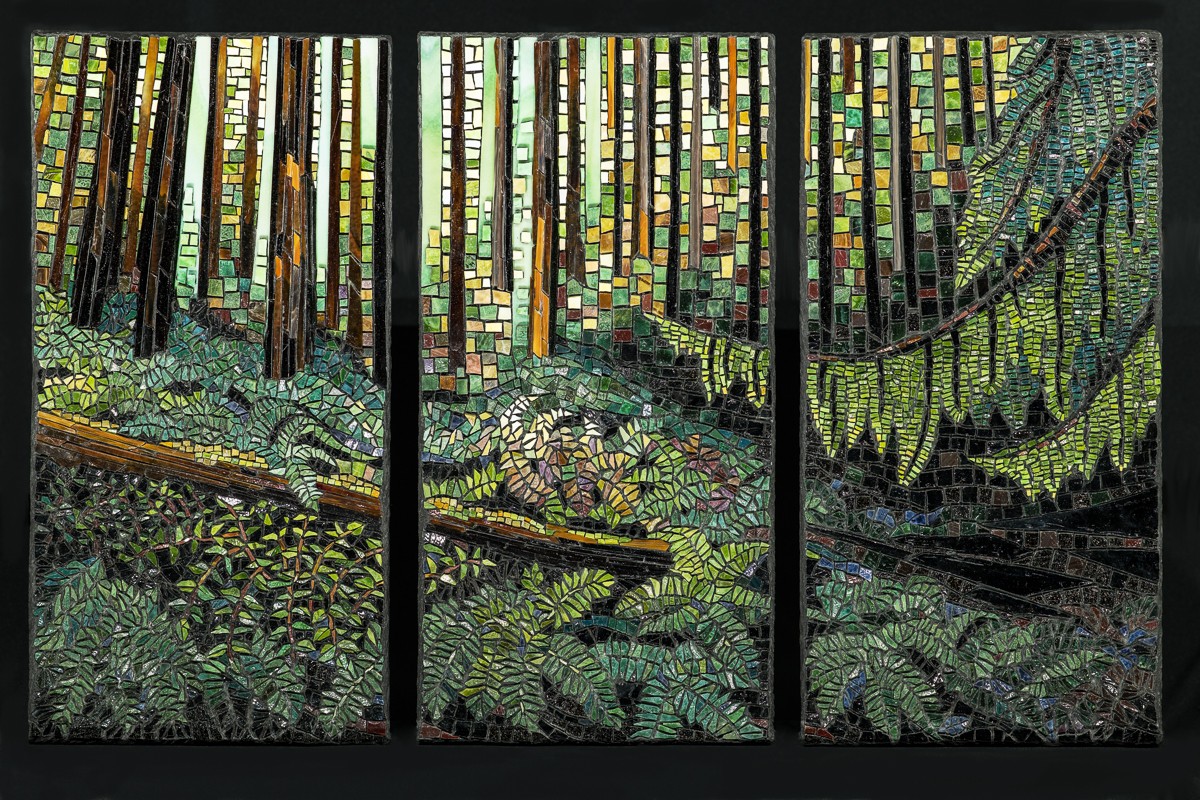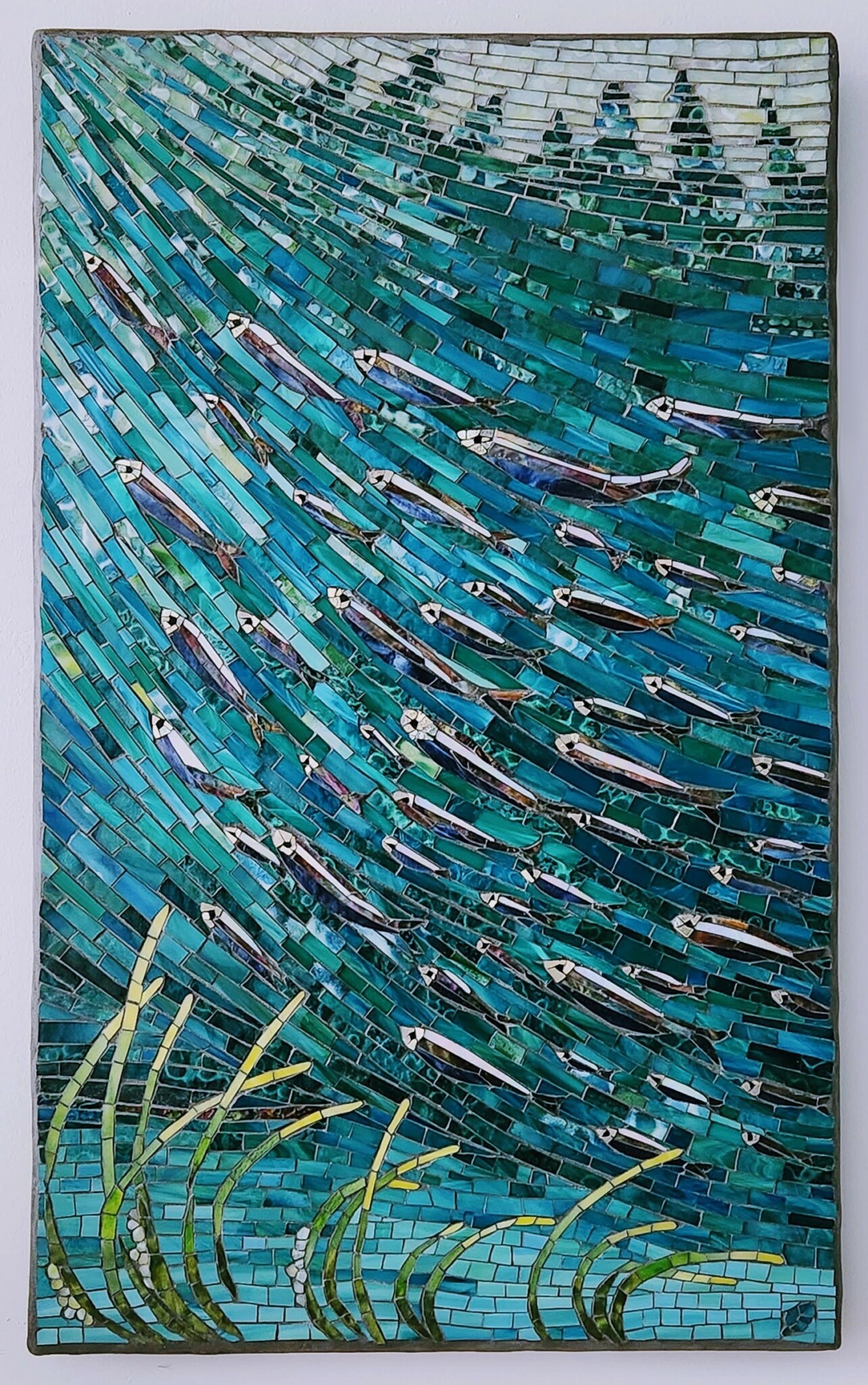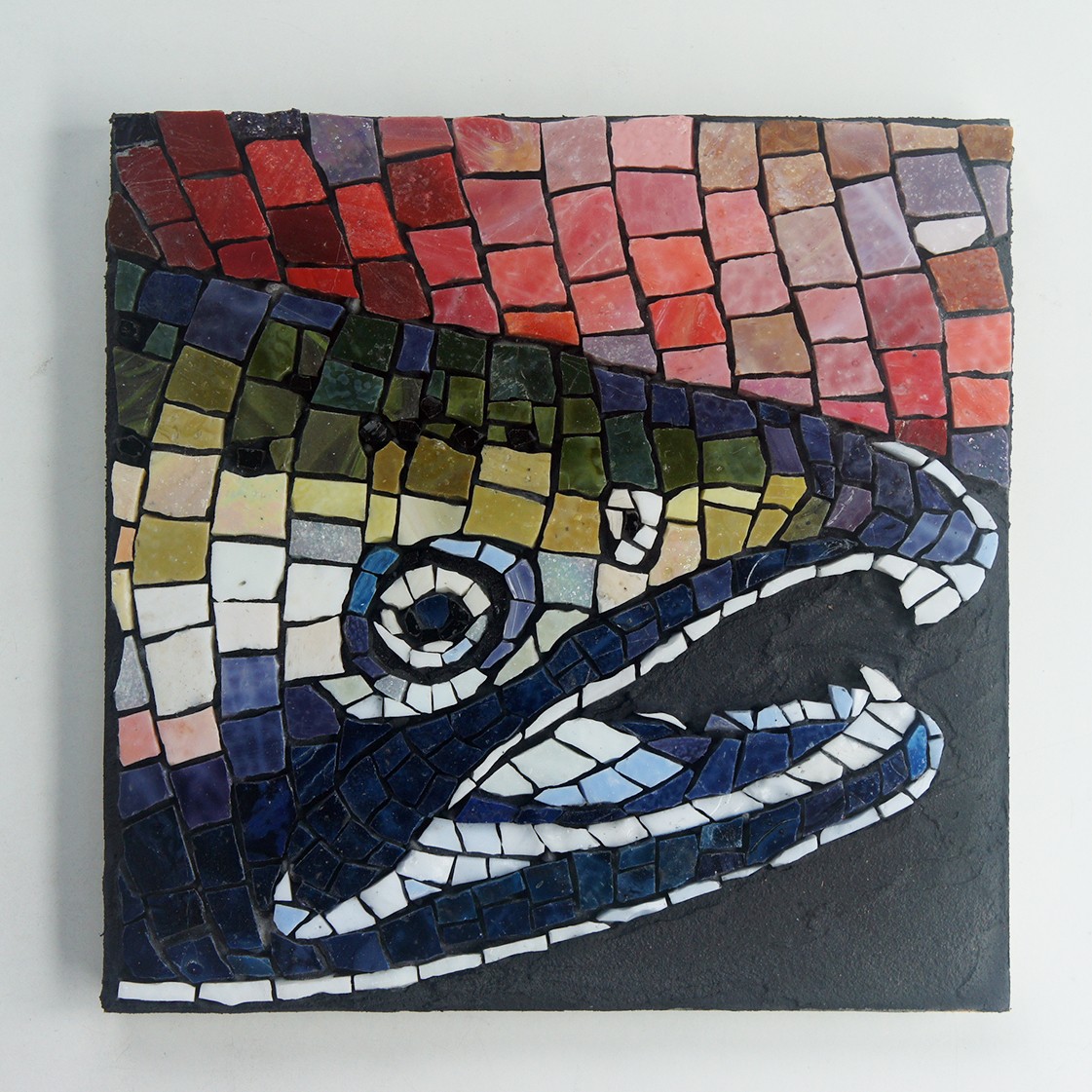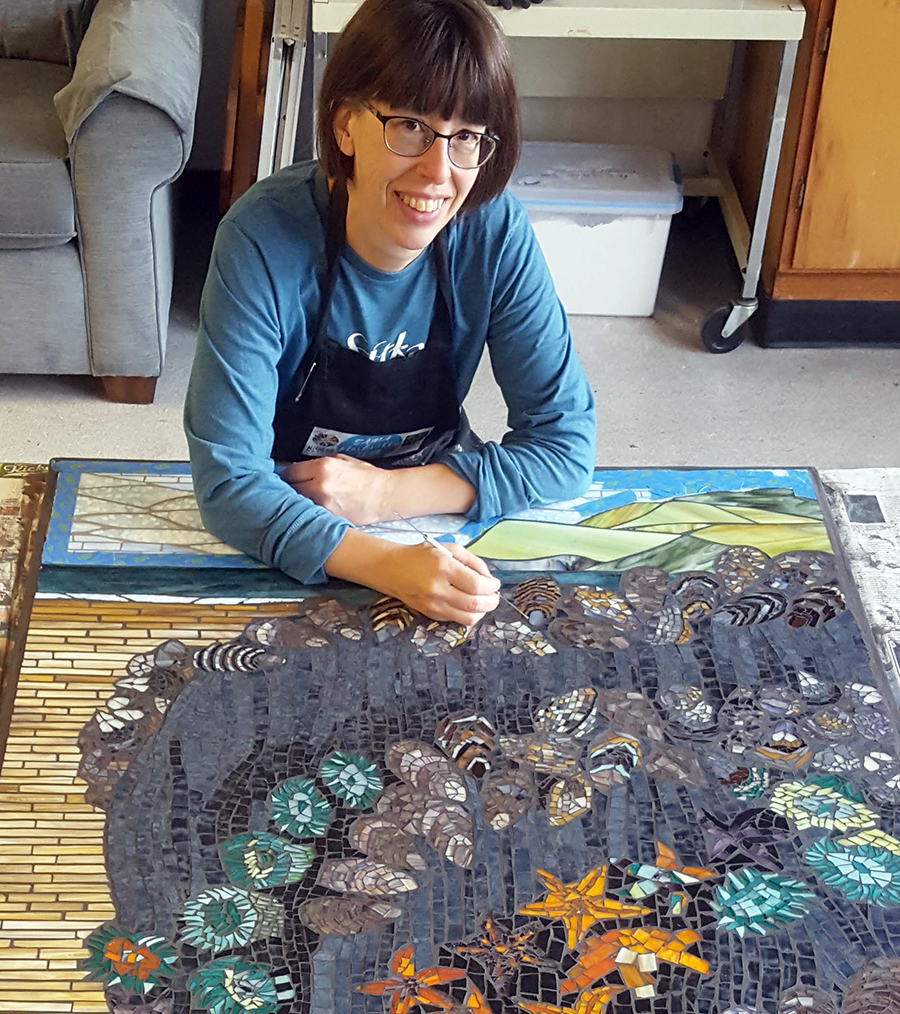We were lucky to catch up with Joanne Daschel recently and have shared our conversation below.
Alright, Joanne thanks for taking the time to share your stories and insights with us today. Learning the craft is often a unique journey from every creative – we’d love to hear about your journey and if knowing what you know now, you would have done anything differently to speed up the learning process.
I learned mosaic largely by doing, making mistakes and gleaning necessary info from short workshops and kind mentors. In the US, there are no degree programs for mosaic as there are in Europe, but classes and workshops are plentiful here. When I started, my options were limited to the few books I could find and the workshops I could afford to attend within my tight budget. Perhaps the process could have been moved along with more chances to travel and study, but I have come to believe the best lessons are gained by sitting in the studio chair each day and starting something that scares me a little. Problem solving has always been my best way to learn new skills and insights.
My first teacher was a local artist, retired from a career in K-12 teaching, who loved stained glass and then mosaics. Jan Miller showed me the “how” of mosaics, like glass cutting and choosing the right adhesives and substrates, but more importantly she urged me to push past uncertainty and always have another piece ready to start.


As always, we appreciate you sharing your insights and we’ve got a few more questions for you, but before we get to all of that can you take a minute to introduce yourself and give our readers some of your back background and context?
I’m a mosaic artist living and working full-time in a small town on the Oregon coast, Lincoln City. I was raised on a small Oregon farm about an hour from Portland. I studied art, theatre arts design and eventually horticulture. My early-adult years were spent in unsatisfying administrative jobs, and the equal lure of art and nature called me back. After several years selling my drawings at art fairs, I remembered a long-ago trip when I saw the work of a master mosaic artist. His elegant portraiture hung on the wall of a sunny garden, and that intrigued me: the idea of creating art that could live outside.
My work has evolved to reflect a lifelong passion for nature, wild places, animals and botany. Now having lived on the coast for over 20 years, you’ll see my mosaics feature underwater communities, animals from the intertidal zone and lush coastal forests. My background in horticulture has sharpened my gaze on the little details of nature, while my theatre arts training shaped an aesthetic of dramatic light and vivid hues. Mosaic provides me with the ultimate palette of color, texture, dimension and reflectivity. My works often are built in a relief style, with layers of glass and stone on hand-built panels.
I also enjoy working with others to realize their vision in the form of commissioned work, and through teaching new artists. It’s gratifying to make pieces or installations that bring our shared ideas to life in commissioned mosaics, gracing their home or a new city park that many can enjoy. Teaching offers the joy of seeing others discover mosaic, and helps so many to briefly unplug from their busy lives to learn new skills that are empowering, like cutting glass or stone.


Is there mission driving your creative journey?
I think of my work as reconnecting humans with nature’s lessons, inspirations, and consolations. I once watched a man in tears while he viewed my little mosaic of a cherry orchard harvest, as it triggered long-dormant memories of his deep connections to past memories he then shared with me. Sometimes my coastal forest triptych, installed at a local hospital, reaches people so deeply they write to me after emerging from a difficult day of medical treatments, to thank me for the solace or moment of inspiration they found looking at the mosaic while in hospital.
I think most of us in the industrialized world spend very little time slowing down enough to really connect with nature, and we suffer for it. It’s apparent when I walk down to the Pacific beach and watch visitors enjoying this wild place. The seaside holds such powerful memories for people because it’s one of the few places they slow down enough to experience nature profoundly. I think mosaics are particularly powerful as a medium that calls the viewer to stop and thoughtfully consider the artwork. It’s in that pause they can be transported to imagine what story this image of nature is telling them, and asking of them.


Have you ever had to pivot?
The first of many shifts was from working full-time in an office job to pursue something closer to my heart, developing an organic market garden/greenhouse business on my husband’s family farm. We pursued this for 5 years while working side jobs, but eventually it became clear that a landscaping business would be more sustainable. So we pivoted to that and moved to our current coastal town at the same time, making a whole new life. It was only after chronic injury forced me to see this wouldn’t be a long term plan that I resolved to finally return to the path I had laid aside in favor of more “responsible” work. It was then I took my first mosaic class, and eventually secured a part-time job at Sitka Center for Art and Ecology. Working there confirmed my instincts that this creative life was possible, and I made invaluable connections along with observations about teaching art and making exhibition-level work. I continued to grow my art practice, started teaching regularly, and secured a studio space in our city’s cultural center. Now working from home in a hand-built studio after almost 15 years of making mosaics, I have pieced together a satisfying full-time career that includes gallery work, commissions, public installations and teaching beginners to learn mosaic.
Contact Info:
- Website: https://joannedaschel.com
- Instagram: https://instagram.com/jdaschel
- Facebook: https://facebook.com/joannedaschelartist


Image Credits
All images by Joanne Daschel, except artist photo by Krista Eddy


